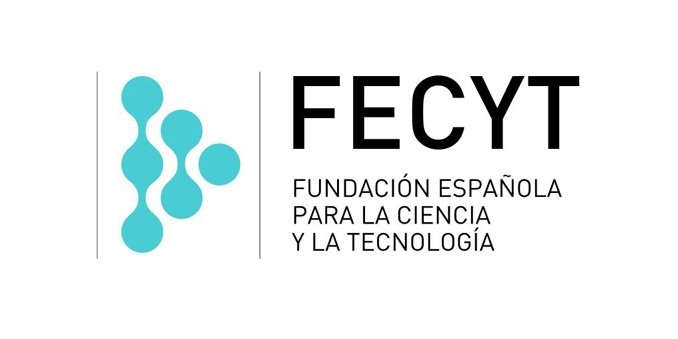Participación activa y pasiva. Diferencias en la experiencialidad y memorabilidad de experiencias de turismo gastronómico
DOI:
https://doi.org/10.17561/ree.n2.2024.8840Palabras clave:
turismo gastronómico, experiencia turística, participación activa, participación pasiva, gestión turística, marketing turísticoResumen
El concepto de participación ha adquirido gran relevancia en el sector turístico, dado que ayuda a las empresas a personalizar los servicios en función de las necesidades específicas de los consumidores, generando así una experiencia única. La participación del turista puede presentarse en las distintas etapas del proceso de consumo, y puede darse tanto de forma activa como pasiva. La distinción entre estas dos modalidades de participación puede marcar una diferencia entre el tipo de experiencia que se ofrece y en las percepciones posteriores de los visitantes. A pesar de ello, poca atención se ha prestado a examinar la participación del turista en sus distintas facetas y cómo influye cada una en la experiencia turística. Por tanto, el objetivo de este estudio consiste en analizar la experiencia turística desde el punto de vista de la participación activa y pasiva, y pretende abordar las diferencias en la valoración de la experiencia en función de estos dos tipos de participación. Para alcanzar este objetivo, este trabajo se centra en el ámbito del turismo gastronómico y aplica una metodología cuantitativa basada en una encuesta personal. La muestra final está compuesta por 374 individuos que han participado en experiencias turísticas de tequila llevadas a cabo en el Municipio de Tequila, México. Los resultados demuestran que la valoración de la experiencia vivida difiere en función del nivel de participación del turista, y que una mayor participación activa de los turistas resulta en un incremento de la experiencialidad y memorabilidad de las actividades turísticas.
Descargas
Referencias
Adhikari, A., & Bhattacharya, S. (2015). Appraisal of literature on customer experience in tourism sector: review and framework. Current Issues in Tourism, 19(4), 296-321. https://doi.org/10.1080/13683500.2015.1082538
Agyeiwaah, E., Otoo, F., Suntikul, W., & Huang, W. (2018). Understanding culinary tourist motivation, experience, satisfaction, and loyalty using a structural approach. Journal of Travel & Tourism Marketing, 36(3), 295–313. https://doi.org/10.1080/10548408.2018.1541775
Basulto, A., & Medina, J. (2020). Industria del tequila: cadenas globales, multinacionales y empresas locales. En A. Basulto, R. Díaz y P. Pérez (Eds.), Cadenas Globales de Valor: ¿Oportunidades para el Desarrollo en América Latina? (pp. 335-378). Plaza y Valdez Editorial.
Buonincontri, P., Morvillo, A., Okumus, F., & van Niekerk, M. (2017). Managing the experience co-creation process in tourism destinations: Empirical findings from Naples. Tourism Management, 62, 264-277. https://doi.org/10.1016/j.tourman.2017.04.014
Cabrales, L., & González, L. (2008). Tequila: territorio y turismo. En J. Bosque y M. Martín (Eds.), Real Sociedad Geográfica (pp. 375-401). Real Sociedad Geográfica.
Campón-Cerro, A, Di-Clemente, E., Hernández-Mogollón, J, & Folgado-Fernández, J. (2023). Olive oil tourism experiences: Effects on quality of life and behavioural intentions. Journal of Vacation Marketing, 29(3), 348-364. https://doi.org/10.1177/135676672210955
Campos, A., Mendes, J., Valle, P., & Scott, N. (2018). Co-creation of tourist experiences: A literature review. Current Issues in Tourism, 21(4), 369-400. https://doi.org/10.1080/13683500.2015.1081158
Chen, C., & Chen, F. (2010). Experience quality, perceived value, satisfaction and behavioral intentions for heritage tourists. Tourism Management, 31(1), 29–35. https://doi.org/10.1016/j.tourman.2009.02.008
Chen, X., Yu, H., & Yu, F. (2015). What is the optimal number of response alternatives for rating scales? From an information processing perspective. Journal of Marketing Analytics, 3(2), 69-78. https://doi.org/10.1057/jma.2015.4
De Bruin, A., & Jelinčić, D. (2016). Toward extending creative tourism: participatory experience tourism. Tourism Review, 71(1), 57-66. https://doi.org/10.1108/TR-05-2015-0018
Di-Clemente, E., Hernández-Mogollón, J., & Campón-Cerro, A. (2019). Food-based experiences as antecedents of destination loyalty. British Food Journal, 121(7), 1495-1507. https://doi.org/10.1108/BFJ-07-2018-0419
Di-Clemente, E., Hernández-Mogollón, J., & Campón-Cerro, A. (2020). Tourists’ involvement and memorable food-based experiences as new determinants of behavioural intentions towards typical products. Current Issues in Tourism, 23(18), 2319-2332. https://doi.org/10.1080/13683500.2019.1631265
Fan, D., Tsaur, S., Lin, J., Chang, T., & Tsa, Y. (2022). Tourist intercultural competence: A multidimensional measurement and its impact on tourist active participation and memorable cultural experiences. Journal of Travel Research, 61(2), 414-429. https://doi.org/10.1177/0047287520982372
Folgado-Fernández, J., Hernández-Mogollón, J., & Duarte, P. (2017). Destination image and loyalty development: the impact of tourists’ food experiences at gastronomic events. Scandinavian Journal of Hospitality and Tourism, 17(1), 92-110. https://doi.org/10.1080/15022250.2016.1221181
Gobierno del Estado de Jalisco. (2024). Tequila. Guadalajara, Gobierno del Estado de Jalisco. En https://www.jalisco.gob.mx/es/jalisco/municipios/tequila.
Gómez-Cuevas, K., Delgado-Cruz, A., & Palmas-Castrejón, Y. D. (2020). Originalidad del tequila como símbolo de identidad mexicana. Percepción del turista-consumidor a partir de su exportación. RIVAR (Santiago), 7(21), 59-80. https://doi.org/10.35588/rivar.v7i21.4638
González, M. A., (2008). El patrimonio sorbo a sorbo, Gestión de turismo cultural sostenible para la región de Tequila. PASOS. Revista de Turismo y Patrimonio Cultural, 6(2), 327-333. https://doi.org/10.25145/j.pasos.2008.06.025
Guo, L., Hu, X., Wei, X., & Cai, X. (2020). The influence of personal motivation and environmental stimuli on customer participation and engagement behavior: the mediating role of experience evaluation. Journal of Hospitality and Tourism Technology, 11(4), 643-666. https://doi.org/10.1108/JHTT-02-2020-0043
Gupta, S., Mishra, O., & Kumar, S. (2023). Tourist participation, well-being and satisfaction: the mediating roles of service experience and tourist empowerment. Current Issues in Tourism, 26(16), 2613-2628. https://doi.org/10.1080/13683500.2022.2091429
Gupta, S., & Priyanka. (2023). Does participation in the service process affect tourists’ well-being? The mediating role of service experience. Journal of Quality Assurance in Hospitality & Tourism, 1-12. https://doi.org/10.1080/1528008X.2022.2162655
Hermann, U. P., Lee, C., Coetzee, W., & Boshoff, L. (2021). Predicting behavioural intentions of craft beer festival attendees by their event experience. International Journal of Wine Business Research, 33(2), 254-274. https://doi.org/10.1108/IJWBR-05-2020-0019
Hernández-López, J. (2013). Paisajes vemos, de su creación no sabemos: El paisaje agavero patrimonio cultural de la humanidad. Relaciones. Estudios de Historia y Sociedad, 34(136), 115-144.
Hernández-Mogollón, J., Di-Clemente, E., & Campón-Cerro, A. (2020). Culinary travel experiences, quality of life and loyalty. Spanish Journal of Marketing - ESIC, 24(3), 425–446. https://doi.org/10.1108/SJME-11-2019-0094
Hosany, S., Sthapit, E., y Björk, P. (2022). Memorable tourism experience: A review and research agenda. Psychology & Marketing, 39(8), 1467-1486. https://doi.org/10.1002/mar.21665
Jin, N., Lee, S., & Lee, H. (2015). The effect of experience quality on perceived value, satisfaction, image and behavioral intention of water park patrons: New versus repeat visitors. International Journal of Tourism Research, 17(1), 82-95. https://doi.org/10.1002/jtr.1968
Kao, Y., Huang, L., & Wu, C. (2008). Effects of theatrical elements on experiential quality and loyalty intentions for theme parks. Asia Pacific Journal of Tourism Research, 13(2), 163–174. https://doi.org/10.1080/10941660802048480
Ladhari, R., & Souiden, N. (2020). The role of mega-sports event experience and host city experience in explaining enjoyment, city image, and behavioral intentions. Journal of Travel & Tourism Marketing, 37(4), 460-478. https://doi.org/10.1080/10548408.2020.1783427
Leri, I., & Theodoridis, P. (2019). The effects of the winery visitor experience on emotions, satisfaction and on post-visit behaviour intentions. Tourism Review, 74(3), 480–502. https://doi.org/10.1108/TR-07-2018-0092.
Lin, P., Chen, L., & Luo, Z. (2022). Analysis of Tourism Experience in Haizhu National Wetland Park Based on Web Text. Sustainability, 14(5), 3011. https://doi.org/10.3390/su14053011
Moon, H., & Han, H. (2018). Destination attributes influencing Chinese travelers’ perceptions of experience quality and intentions for island tourism: A case of Jeju Island. Tourism Management Perspectives, 28, 71–82. https://doi.org/10.1016/j.tmp.2018.08.002
Moreno-Lobato, A., Di-Clemente, E., Campón-Cerro, A. M., & Hernández-Mogollón, J. M. (2023). Application of smellscapes and affective-cognitive analysis in memorable cheese-based tourism experiences. International Journal of Gastronomy and Food Science, 34, 100815. https://doi.org/10.1016/j.ijgfs.2023.100815
Muskat, B., Prayag, G., Hosany, S., Li, G., Vu, Q. and Wagner, S. (2024). The interplay of sensory and non-sensory factors in food tourism experiences. Tourism Review, 79(3), 658-670. https://doi.org/10.1108/TR-12-2022-0627
Mustak, M., Jaakkola, E., & Halinen, A. (2013). Customer participation and value creation: a systematic review and research implications. Managing Service Quality: An International Journal, 23(4), 341-359. https://doi.org/10.1108/MSQ-03-2013-0046
Perkins, H., & Thorns, D. (2001). Gazing or performing? Reflections on Urry's tourist gaze in the context of contemporary experience in the antipodes. International Sociology, 16(2), 185-204. https://doi.org/10.1177/02685809010160020
Pine, J., & Gilmore, J. (1998). Welcome to the Experience Economy. Harvard Business Review, 97-105.
Pizam, A., & Fleischer, A. (2005). The relationship between cultural characteristics and preference for active vs. passive tourist activities. Journal of Hospitality and Leisure Marketing, 12(4), 5-25. https://doi.org/10.1300/J150v12n04_02
Rachao, S., Breda, Z., Fernandes, C., & Joukes, V. (2020). Cocreation of tourism experiences: are food-related activities being explored? British Food Journal, 122(3), 910-928. https://doi.org/10.1108/BFJ-10-2019-0769
Rachão, S., Breda, Z., Fernandes, C., & Joukes, V. (2021). Drivers of experience co-creation in food-and-wine tourism: An exploratory quantitative analysis. Tourism Management Perspectives, 37, 100783. https://doi.org/10.1016/j.tmp.2020.100783
Sánchez-Vargas, E., Campón-Cerro, A. M., & Moreno-Lobato, A. (2022). Aplicaciones del contenido generado por el usuario en el sector turístico: Análisis de los factores de éxito de experiencias turísticas queseras en Tripadvisor. ROTUR. Revista de Ocio y Turismo, 16(2), 164-185. https://doi.org/10.17979/rotur.2022.16.2.8982
Schlesinger, W., Cervera-Taulet, A., & Pérez-Cabañero, C. (2020). Exploring the links between destination attributes, quality of service experience and loyalty in emerging Mediterranean destinations. Tourism Management Perspectives, 35, 1-12. https://doi.org/10.1016/j.tmp.2020.100699
Seyitoğlu, F., & Alphan, E. (2021). Gastronomy tourism through tea and coffee: travellers’ museum experience. International Journal of Culture, Tourism and Hospitality Research, 15(3), 413-427. https://doi.org/10.1108/IJCTHR-10-2020-0243
Sthapit, E., Coudounaris, D., & Bjork, P. (2019). Extending the memorable tourism experience construct: An investigation of memories of local food experiences. Scandinavian Journal of Hospitality and Tourism, 19(4–5), 333–353. https://doi.org/10.1080/15022250.2019.1689530.
Stone, M. J., Migacz, S., & Sthapit, E. (2022). Connections Between Culinary Tourism Experiences and Memory. Journal of Hospitality & Tourism Research, 46(4), 797-807. https://doi.org/10.1177/1096348021994171
Stone, M. J., Migacz, S., & Wolf, E. (2019). Beyond the journey: the lasting impact of culinary tourism activities. Current Issues in Tourism, 22(2), 147–152. https://doi.org/10.1080/13683500.2018.1427705
Su, C., Lebrun, A. M., Bouchet, P., Wang, J. R., Lorgnier, N., & Yang, J. (2016). Tourists’ participation and preference-related belief in co-creating value of experience: a nature-based perspective. Service Business, 10, 823-846. https://doi.org/10.1007/s11628-015-0292-z
Trespalacios, J.A., Vázquez, R., De la Ballina, F.J., Suárez, A. (2016). Investigación de Mercados. Paraninfo, Madrid.
Tsai, C., Hsu, H., & Chen, C. (2020). An examination of experiential quality, nostalgia, place attachment and behavioral intentions of hospitality customers. Journal of Hospitality Marketing & Management, 29(7), 869-885. https://doi.org/10.1080/19368623.2020.1706684
Xie, L., Li, D., & Keh, H. (2020). Customer participation and well-being: the roles of service experience, customer empowerment and social support. Journal of Service Theory and Practice, 30(6), 557-584. https://doi.org/10.1108/JSTP-11-2019-0228
Yang, A., Chen, Y., & Huang, Y. (2017). Enhancing customer loyalty in tourism services: the role of customer-company identification and customer participation. Asia Pacific Journal of Tourism Research, 22(7), 735-746. https://doi.org/10.1080/10941665.2017.1319398
Yu, Q., Pickering, S., Geng, R., y Yen, D. A. (2021). Thanks for the memories: Exploring city tourism experiences via social media reviews. Tourism Management Perspectives, 40, 100851. https://doi.org/10.1016/j.tmp.2021.100851
Zatori, A., Smith, M., & Puczko, L. (2018). Experience-involvement, memorability and authenticity: The service provider's effect on tourist experience. Tourism Management, 67, 111-126. https://doi.org/10.1016/j.tourman.2017.12.013
Publicado
Número
Sección
Licencia
Derechos de autor 2024 Lilia Yolanda Noyola-Aguilar, Bárbara Sofía Pasaco-González, Ana María Campón-Cerro, José Manuel Hernández-Mogollón

Esta obra está bajo una licencia internacional Creative Commons Atribución 4.0.
- Los autores/as conservarán sus derechos de autor y garantizarán a la revista el derecho de primera publicación de su obra, el cuál estará simultáneamente sujeto a la Licencia de reconocimiento de Creative Commons que permite a terceros compartir la obra siempre que se indique su autor y su primera publicación esta revista.
- Los autores/as podrán adoptar otros acuerdos de licencia no exclusiva de distribución de la versión de la obra publicada (p. ej.: depositarla en un archivo telemático institucional o publicarla en un volumen monográfico) siempre que se indique la publicación inicial en esta revista.
- Se permite y recomienda a los autores/as difundir su obra a través de Internet (p. ej.: en archivos telemáticos institucionales o en su página web) antes y durante el proceso de envío, lo cual puede producir intercambios interesantes y aumentar las citas de la obra publicada. (Véase El efecto del acceso abierto).
La Revista de Estudios Empresariales. Segunda Época, utiliza PKP Preservation Network (PN).




























